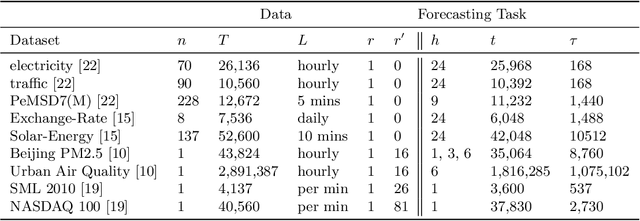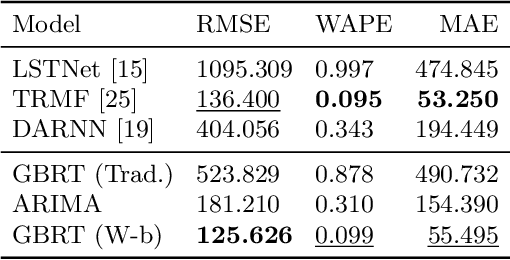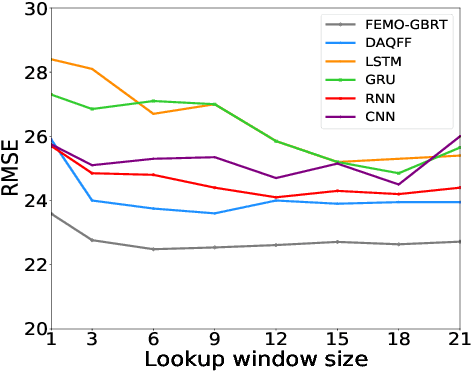Hadi Samer Jomaa
Do We Really Need Deep Learning Models for Time Series Forecasting?
Jan 06, 2021



Abstract:Time series forecasting is a crucial task in machine learning, as it has a wide range of applications including but not limited to forecasting electricity consumption, traffic, and air quality. Traditional forecasting models relied on rolling averages, vector auto-regression and auto-regressive integrated moving averages. On the other hand, deep learning and matrix factorization models have been recently proposed to tackle the same problem with more competitive performance. However, one major drawback of such models is that they tend to be overly complex in comparison to traditional techniques. In this paper, we try to answer whether these highly complex deep learning models are without alternative. We aim to enrich the pool of simple but powerful baselines by revisiting the gradient boosting regression trees for time series forecasting. Specifically, we reconfigure the way time series data is handled by Gradient Tree Boosting models in a windowed fashion that is similar to the deep learning models. For each training window, the target values are concatenated with external features, and then flattened to form one input instance for a multi-output gradient boosting regression tree model. We conducted a comparative study on nine datasets for eight state-of-the-art deep-learning models that were presented at top-level conferences in the last years. The results demonstrated that the proposed approach outperforms all of the state-of-the-art models.
Handwritten Amharic Character Recognition Using a Convolutional Neural Network
Sep 23, 2019



Abstract:Amharic is the official language of the Federal Democratic Republic of Ethiopia. There are lots of historic Amharic and Ethiopic handwritten documents addressing various relevant issues including governance, science, religious, social rules, cultures and art works which are very reach indigenous knowledge. The Amharic language has its own alphabet derived from Ge'ez which is currently the liturgical language in Ethiopia. Handwritten character recognition for non Latin scripts like Amharic is not addressed especially using the advantages of the state of the art techniques. This research work designs for the first time a model for Amharic handwritten character recognition using a convolutional neural network. The dataset was organized from collected sample handwritten documents and data augmentation was applied for machine learning. The model was further enhanced using multi-task learning from the relationships of the characters. Promising results are observed from the later model which can further be applied to word prediction.
 Add to Chrome
Add to Chrome Add to Firefox
Add to Firefox Add to Edge
Add to Edge